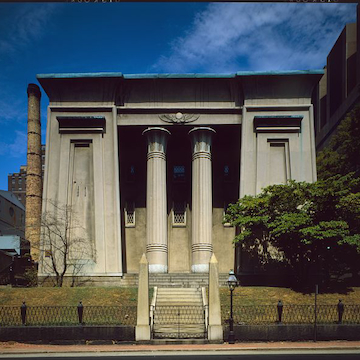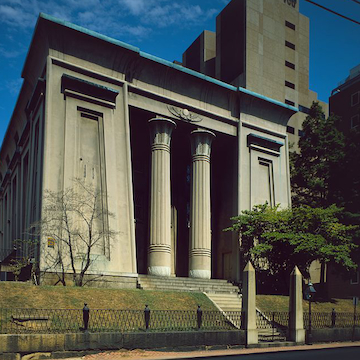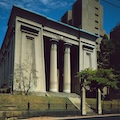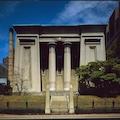The oldest medical college building in the South housed the forerunner of the Medical College of Virginia. Hampden-Sydney College opened a medical department in the old Union Hotel in Richmond in 1837 and soon needed more space. Designed by Stewart within a year of St. Paul's, this building demonstrates the significance of iconography to nineteenth-century architects and patrons; the medical expertise of the ancient Egyptians evidently suggested the use of the style. A five-story building was effectively disguised in temple form, with giantorder columns, battered walls, and a cove cornice. The exotic detail continues even to the cast iron fence, with herm posts that are often mistaken for mummy cases. (Be sure to count the toes!) The interior renovation carried out in 1938–1939 created a fabulous Art Deco, Egyptian Revival auditorium. This twentieth-century enhancement makes the Egyptian Building probably the only building in America with contributions from two major Egyptian revival periods.
Also worth noting is the base of the unbuilt tower of Monumental Church, only yards away from the Egyptian Building. The level of Richmond's patronage in the nineteenth century









